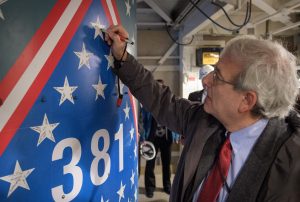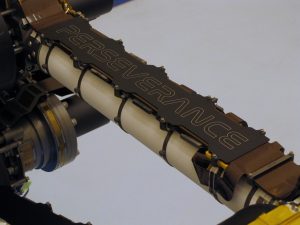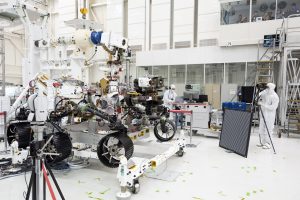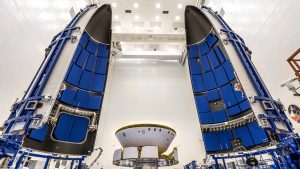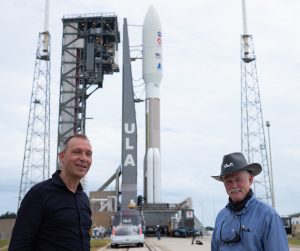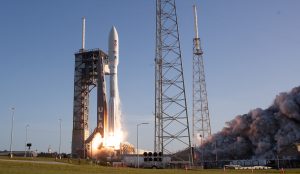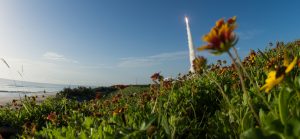Inspiration is defined as “the process of being mentally stimulated to do or feel something, especially to do something creative”. I love that definition, especially because “inspiration” is a crucial part and high-level priority of NASA’s Science Program. Inspiration is not just about information – it is about something much tougher: “to have somebody feel something,” and – even tougher: “to have somebody do something.”
I have been thinking a lot about inspiration during the time of COVID. There are three questions that have been on my mind – why? who? how?
Why inspiration from science? If there is anything we have learned from the last few months, it is that science is about two key values that matter today – collaboration and hope.
We inhabit a single planet, and we are deeply interconnected to each other. We look at the same amazing night sky and we breathe the same air. In the same way, science is cross-cutting, international and connecting. Even though funded by countries and – in most cases – national entities like NASA, science is an activity where human energy is truly aligned. I am proud that NASA understands that at its core, and NASA Science has over 400 agreements with international entities to prove it.
I remember attending my first science conference. Even though I did not understand much about the technical topics presented, it was clear that we were one team of people working on the same thing. Some of them were part of the former Soviet Union and others from Europe and the US, but they knew and respected each other. Science is a language that connects us and allows us to make progress together using the same rules and playing field. It is sad to see when national actions take the power of science away for short time gains. We know of other challenges as well. But what makes science inspiring and enduring is that it builds bridges and increases the space we live and think in for all of us.
Science is also about hope. If you do not believe that, listen to any well-researched broadcast about COVID anywhere on Earth. When and how we can go back to work in person, depends on the struggle of an international science community pushing towards better understanding, a vaccination, and a cure. There is also hope and inspiration in exploring Mars, our universe, our Sun, and our planet – each project demonstrates the power of teams to go beyond their own limitations and to transcend obstacles. What worries me most about those who do not understand science take away from that hopeful experience. Instead, in times of crisis, we need hope more than ever, we need inspiration to light the way.
Who should inspire? It turns out that really matters, and even more so than I thought before I joined NASA. I know I lead NASA’s science program and it is important that I am part of its inspirational activities. And when I speak, I am more inspiring to a kid growing up in the mountains, who sees himself in me, than when others speak. I have observed young girls react positively to female leaders because they see themselves in them. I have seen friends doing outreach in other languages, and I have observed how people react to them. I have observed young kids of color react very differently to my friends talking who look just like them. If we want to reach the broadest audience possible, we need ourselves to have breadth in various dimensions. We have taken deliberate actions to address that. For example, I was proud of the Mars 2020 Perseverance broadcast because we celebrated our team and not just the top three people. We need to do better consistently when it comes to “who,” and we are committed to increasing our reach by focusing on that.
And how should we inspire? The most important element of inspiration is what I mentioned at the very top: it is about making others feel and do things. The “how of inspiration” is therefore all about them and far less about us. For science stories to move people, they need to be understandable and not naïve – nobody wants to feel like people don’t actually try to explain and instead give shallow answers. Great communication and great inspiration starts with caring for the other, getting to know them, and by empathy for them. It is about learning and doing better continually. Yes, science is about beauty and the sense of awe you feel when looking at the sky, or the sea. It is about the devastating power of a thunderstorm, a hurricane or a solar flare, and exploding stars. It is about the vastness of space, full of our curiosity about the rules and order that permeates apparent chaos. It is about the order of atoms, about chemicals that are made up by this and possibly turn into something incredible – life itself.
Yes, science is also about people, about their stories and about struggle. Before our solar mission was named after Dr. Eugene Parker, it was a great engineering project, once it was attached to the story of our friend Dr. Parker, it inspired. I remember how worried my good friend and public relations lead was when I wanted to talk about our struggles developing a mission during a press conference. I don’t know about you, but I am not inspired to feel and do by people who are perfect – I may admire heroes, but I am reminded every day that I am not a hero – they do not inspire me. I want to work with people who – like me – struggle. Because that gives me hope that I can do something as well. My life can matter also. So, why do we think people listening to our stories are different than us in that way?
My biggest worry about the “how of inspiration” of science is that many of us are happy to inspire people who are already “in the choir” – the <1% of people who read our stories and love them already. Trust me, it feels great to give a speech with rousing applause from thousands of people who know you and at the end queue up to get an autograph. But, I always wonder who is NOT in the room. Who are the people we are missing? And, how can we find additional ways to talk to them and open up doors so they too can get that amazing sense of hope and excitement that not only gives good information, but inspires them – they are stimulated to do or feel something, especially to do something creative!
Finally, I want to thank all who in their lives work on this important challenge – your work of inspiring others really matters!


